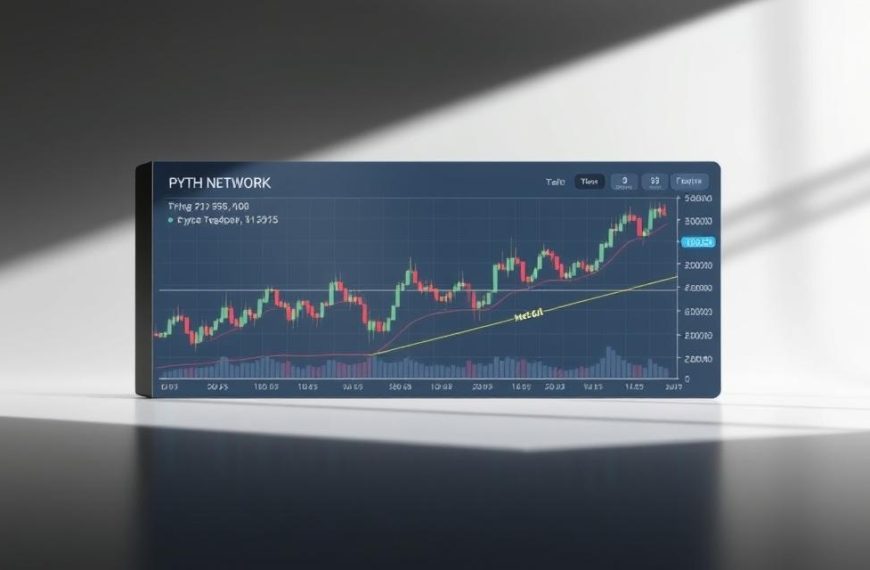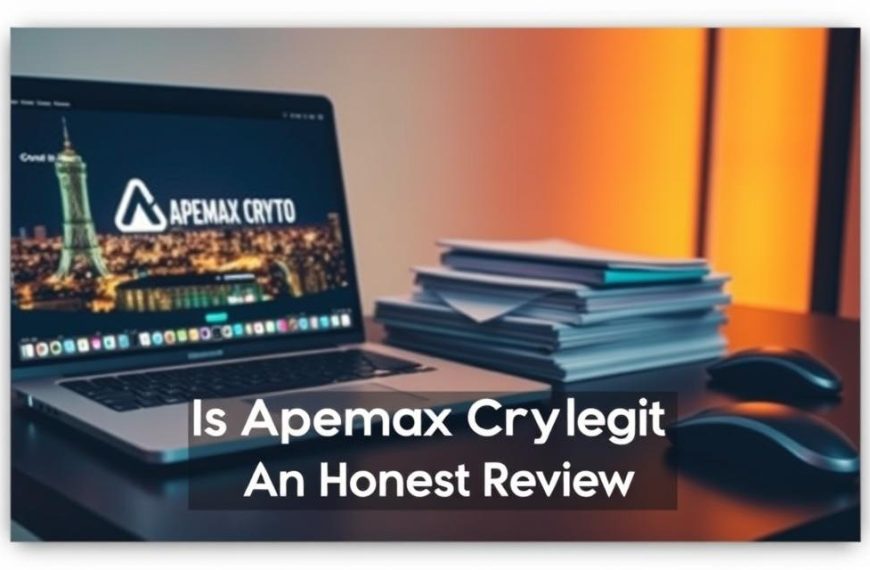In today’s fast-paced digital economy, peer-to-peer crypto payments are changing how we send money around the world. Kasta is a leading blockchain payment platform. It connects old finance with new systems using its KASTA token. It’s built on Polygon’s ERC-20 framework, focusing on fast, cheap, and easy use for everyone.
The platform cuts out middlemen for direct transactions, saving money and time. It has a fixed 1.5 billion tokens, with 764 million in use. KASTA is not just for paying; it’s also a way to save money. It works with Visa Direct for easy switching between crypto and regular money.
Kasta is different from banks because it supports feeless cross-border transfers. This is great for businesses that trade across borders. Thanks to Polygon, it’s fast and cheap, beating slow traditional payment methods.
For people in the US looking for good crypto payment options, Kasta is a smart choice. It’s easy to use because it works with Visa cards. At the same time, it uses blockchain for safety. This solves problems like high fees and slow payments without losing security.
Understanding Kasta Crypto’s Core Functionality
Kasta Crypto brings together blockchain tech and traditional finance. It lets users enjoy crypto’s speed while keeping access to regular money. This mix is at the heart of what Kasta does.
The fundamentals of peer-to-peer transactions
Kasta makes it easy to send money directly between people, skipping banks. It uses smart contracts that work automatically when certain conditions are met. This way, Kasta keeps track of transactions without needing outside help.
Decentralised payment architecture
Kasta is built on Polygon’s ERC-20 framework. It can handle over 7,000 transactions per second. This decentralised finance architecture also works with SEPA for euro payments and Visa Direct for card transactions. It’s a special link between crypto and regular money.
The platform’s Polygon blockchain makes sure transactions are confirmed quickly and cheaply. It has some key features:
- Gas fee optimisation through batched transactions
- Native compatibility with Ethereum-based wallets
- 0% swap fees when using KASTA tokens
Kasta is designed for everyday use, not just for trading. It combines blockchain’s safety with the ease of traditional payments. This helps solve a big problem for decentralised finance: getting more people to use it.
How Kasta Crypto Operates
Kasta Crypto makes digital transactions easy and secure. It uses a simple system that combines user-friendly design with advanced technology. This section looks at how the platform works, from starting payments to handling its own cryptocurrency.
Step-by-Step Transaction Process
Kasta’s payment system is easy to use but safe. Users start by setting up their digital wallets. This is a quick and simple process.
User Wallet Setup and Configuration
Setting up a Kasta wallet takes less than two minutes. You only need:
- Phone number or email verification
- QR code scanning capability activation
- Optional two-factor authentication setup
This crypto wallet setup is designed to be easy for beginners. It doesn’t ask for complicated KYC checks.
Cross-Border Payment Mechanisms
Kasta’s special swap engine makes international money transfers smooth. For example, sending £500 to Japan works like this:
- The system quickly changes GBP to KASTA tokens
- Tokens move across blockchain networks in 2-3 seconds
- Recipients get the money in their local currency (JPY)
This process avoids the usual forex problems. It keeps fees under 0.5%.
KASTA Token Utility Explained
The platform’s own cryptocurrency, KASTA, has many uses. It’s based on smart economic rules.
Tokenomics and Supply Structure
KASTA’s token supply economics is special:
- 225 million tokens for ecosystem rewards
- 10% transaction fee burn mechanism
- 37.5 million tokens available at first
These rules help control inflation. They also set aside 15% of tokens for mining rewards. This keeps the market stable by preventing too many tokens from being released at once.
Key Features of Kasta Platform
Kasta combines tech innovation with user-friendly design. It meets today’s financial needs with three main features: fast transactions, support for many currencies, and easy-to-use interface.
Instant Settlement Capabilities
The platform offers sub-second transaction finality thanks to Polygon’s proof-of-stake. This is much faster than traditional finance and some blockchain networks like Bitcoin.
| Network | Average Settlement | Cost per Transaction |
|---|---|---|
| Kasta | 0.8 seconds | £0.001 |
| Ethereum | 5 minutes | £2.50 |
| Traditional Banking | 1-3 days | £15-£30 |
Multi-Currency Support System
Kasta’s multi-currency wallet supports 18+ digital and traditional currencies. This includes:
- Cryptoassets: BTC, ETH, USDC
- Fiat currencies: GBP, EUR
- Platform token: KASTA
Supported Fiat and Crypto Currencies
The system converts assets automatically using real-time rates. Users can pay in euros and receive in bitcoin without manual exchanges.
User Interface Design Principles
Kasta focuses on payment app UX with three main principles:
- Minimalist navigation menus
- Biometric authentication options
- Customisable currency dashboards
Accessibility Features Overview
The platform includes:
- QR-based payments for retail environments
- Phone number transactions for unbanked users
- High-contrast visual modes
These features make finance accessible to everyone, regardless of their skills or background.
Advantages Over Traditional Payment Systems
Today, we need financial solutions that are both affordable and global. Kasta Crypto stands out here, beating traditional banks in two key areas: cost and reach.
Cost Comparison Analysis
Traditional cross-border payments often hide extra fees. Kasta Crypto cuts out these hidden costs:
| Fee Type | Kasta Crypto | Traditional Banking |
|---|---|---|
| Same-currency transfers | 0% | 3-5% (SWIFT average) |
| Currency swaps | 1-2% | 5-7% (inc. FX spreads) |
For example, sending £1,000 from the UK costs £0 with Kasta. Banks charge £30-50. This makes Kasta a great choice for those who send money often, like freelancers and small businesses.
Geographical Accessibility Benefits
Kasta’s system works in 150+ countries, reaching places banks often can’t. Its benefits include:
- Visa partnership for card withdrawals in unbanked areas
- Real-time settlements in 40+ fiat currencies
- No need for a local bank account
“Platforms bridging the financial inclusion gap through crypto rails are redefining what global payment networks can achieve.”
Global Coverage Statistics
More than 85% of Kasta users are outside big financial centers. They use Kasta to avoid:
- Slow banking networks (3-5 business days)
- Strict capital controls in 67 places
- Branches that are only open for a few hours
Security Protocols in Kasta Ecosystem
Keeping user assets and data safe is key in decentralised finance. Kasta uses advanced tech and strict financial compliance rules to tackle crypto security issues.
Encryption Standards Implementation
The platform uses AES-256 encryption, the same as the military. This top-level encryption keeps all data and wallet actions safe. It also has real-time checks and blockchain’s unchangeable nature to stop tampering.
Users can log in with biometrics or time-based passwords. This two-step method helps:
- Stop hackers from getting in
- Make sure big transactions are real
- Work with hardware keys for extra safety
Regulatory Compliance Measures
Kasta follows global rules like the EU’s MiCA. It also gets checked by third parties to make sure it follows anti-money laundering and data protection laws.
KYC/AML Procedures Explained
The verification system is designed to be easy yet secure:
| Verification Level | Requirements | Transaction Limits |
|---|---|---|
| Basic | Email confirmation | £1,000 crypto monthly |
| Advanced | Government ID + proof of address | Unlimited fiat conversions |
This setup lets for easy crypto moves while following strict KYC verification rules for fiat. It also uses tools to spot and stop odd transactions.
Real-World Application Scenarios
Kasta Crypto is changing how we handle money in real life. It’s used in shops and for sending money abroad. This tech makes old ways of doing things better with blockchain.
Retail Payment Integrations
More than 650 shops now use Kasta’s crypto POS systems. They like the lower fees and quick payments. A UK online shop saved 2.9% on card fees by using Kasta.
Shopify has helped more stores accept crypto. They see 22% more crypto payments. The Ka.app Visa card makes spending crypto easy at 40 million places worldwide.
Personal Remittance Use Cases
Kasta beats banks for sending money abroad. A study in the Philippines showed faster and cheaper transfers. Transfers from Europe took 48 hours, not 5 days like banks.
Cross-Border Transaction Examples
| Service | Transfer Time | Average Cost |
|---|---|---|
| Kasta Crypto | 48 hours | €1.50 |
| Traditional Banks | 5 days | €4.55 |
Kasta’s direct blockchain way cuts out delays. Migrant workers save more money with merchant crypto adoption.
Competitive Landscape Analysis
The fintech world is full of competition. Kasta Crypto stands out by combining blockchain tech with user-friendly design. It challenges both old finance giants and new crypto platforms. Let’s see how it compares with the big names.
Comparison with Conventional Banking Systems
Old banks struggle with outdated systems. They take 3-5 business days to send money abroad. Kasta’s blockchain does it in seconds. The cost difference is huge too.
| Service | Average Fee | Settlement Time |
|---|---|---|
| Wise FX Transfers | 1.75% | 1-2 days |
| PayPal Crypto Purchases | 3.49% | Instant (fiat to crypto) |
| Kasta Transactions | 0% | 10 seconds |
Speed and Cost Differentials
Revolut charges £5 for fast international payments. Kasta doesn’t have any fees for direct transactions. This feeless model saves businesses a lot of money on cross-border deals.
Positioning Against Crypto Competitors
Kasta shines in the blockchain world with its DeFi benefits. Crypto.com’s cards have 0.4% fees, but Kasta’s KASTA token lets users transfer money for free.
Unique Selling Propositions Highlighted
Kasta has three key points that set it apart:
- Zero hidden charges: Unlike platforms with complex fee structures
- Liquidity access: Integrated with Bybit and Gate.io exchanges
- Multi-chain support: Operates across Ethereum, Polygon, and BNB Chain networks
This strategy helps Kasta appeal to both crypto fans and those looking for blockchain’s benefits without the usual hassle.
Conclusion
Kasta Crypto shows how blockchain is changing how we make payments. It has a $16.5 million market cap and 51% of KASTA tokens in use. This makes it a strong player in the future of crypto payments, thanks to its Visa card link-up.
It offers instant payments in over 45 fiat currencies. This is great for users who want fast transactions.
Success depends on growing and facing regulatory hurdles. The EU’s MiCA framework adds costs but boosts KASTA’s credibility. Retail partnerships and remittance services could make KASTA more popular, thanks to its low fees.
Kasta’s design focuses on easy use and security. It supports many currencies and uses top-notch encryption. Its path shows blockchain finance is moving towards more practical and flexible solutions.
Watching Visa card use and regulatory changes is key to Kasta’s growth. It shows how Kasta can grow in the digital payment world.



















